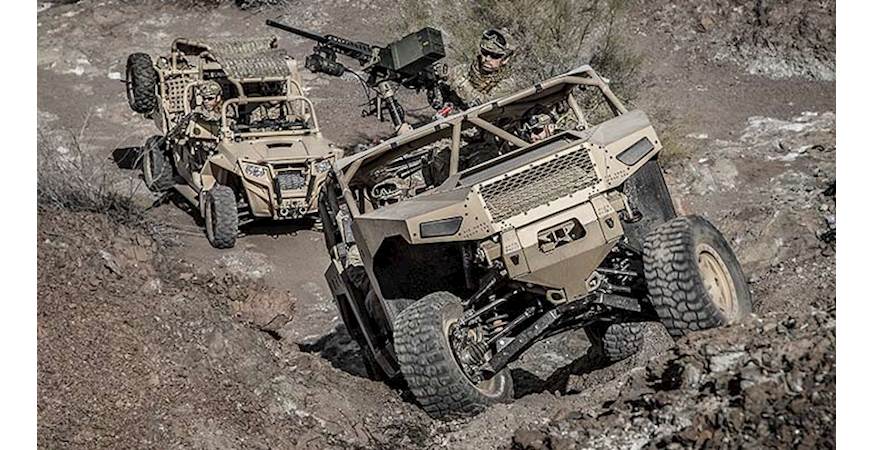As the Canadian government continues to come under fire for exports of armoured personnel carriers to countries like Saudi Arabia and South Sudan, our own military is looking to augment its capabilities with an entirely new type of ground vehicle.

Following in the footsteps of the American military, Canada has issued a call for tender for 52 new ultra-light combat vehicles, or ULCVs.
READ MORE: Dion approved $11B in export permits for armoured vehicles destined for Saudi Arabia
The ULCVs will be four-passenger, Jeep-like vehicles that are small and light enough to fit inside a Canadian Forces’ CC-177 Globemaster aircraft, a CC-130 Hercules aircraft or a CH-147 Chinook helicopter (or to be lifted externally by helicopter).
According to the tender documents, published earlier this week, they must also be designed “to be air dropped with a 900 kg payload” from either the Globemaster or the Hercules, and detached/offloaded from the helicopter within five minutes.
WATCH: Auditor General finds Canadian military struggling to recruit

They need to be able to operate in extreme temperatures (-32C to +49C), handle a combination of urban and rural environments (mountainous, plains, jungle and woodland) and will be off-road 75 per cent of the time, the documents note.
“The Department of National Defence (DND) will be using the ULCV as a complimentary vehicle to increase mobility across a spectrum of operations,” confirmed department spokesperson Ashley Lemire in an email to Global News.
“The ULCV is a new type of vehicle and will be used in concert with the current fleet of DND ground vehicles to increase mobility on operations.”
Increasing ground mobility
The ULCV can be used for a variety of different missions and tasks, Lemire noted, extending the “tactical mobility needs” of troops in the field. In plain English, that could mean providing quick deployment into a hostile area, cutting down on the distance soldiers need to walk before reaching an active battle zone.
The ULCVs may also give troops an easier entry and exit during reconnaissance or surveillance missions, and help avoid putting helicopters within the range of enemy fire that could shoot them down.
“The range and maneuverability of (the) ULCV is an increase over portions of the current fleet of vehicles,” Lemire said.
The call for tender notes that DND will have the option of adding 26 more vehicles to the total within two years.
There are several possible options in terms of the model of ULCV Canada may acquire. U.S. defence firm Polaris could be a contender with its DAGOR model, as could aerospace giant Boeing with the Phantom Badger.
The total cost of the new acquisition will depend on the bids received, but Polaris’ DAGOR models for example, run around US$150,000 apiece. That’s around CAD$194,000 at the current exchange rate.
Tight timeline
Much like their American counterparts, department officials are moving quickly to add ULCVs to the roster of available ground vehicles as the role of special operations groups becomes more prominent. Among other missions, Canadians special forces are currently carrying out training work in Iraq with local Kurdish troops fighting the so-called Islamic State.
WATCH: PM Trudeau outlines Canada’s new role in fighting ISIS

This week’s call for tender comes just under a year after an initial request for information, which went out last August, and the first 52 vehicles are expected to be delivered by Nov. 15, 2017.
Asked if the American move to purchase a fleet of ULCVs prompted the Canadian tender, Lemire said that “while we must ensure our equipment remains compatible with other nations with whom we frequently work, the equipment we acquire must also meet the essential requirements … needed for the (Canadian Armed Forces) to achieve the missions assigned by the Government of Canada.”


Comments